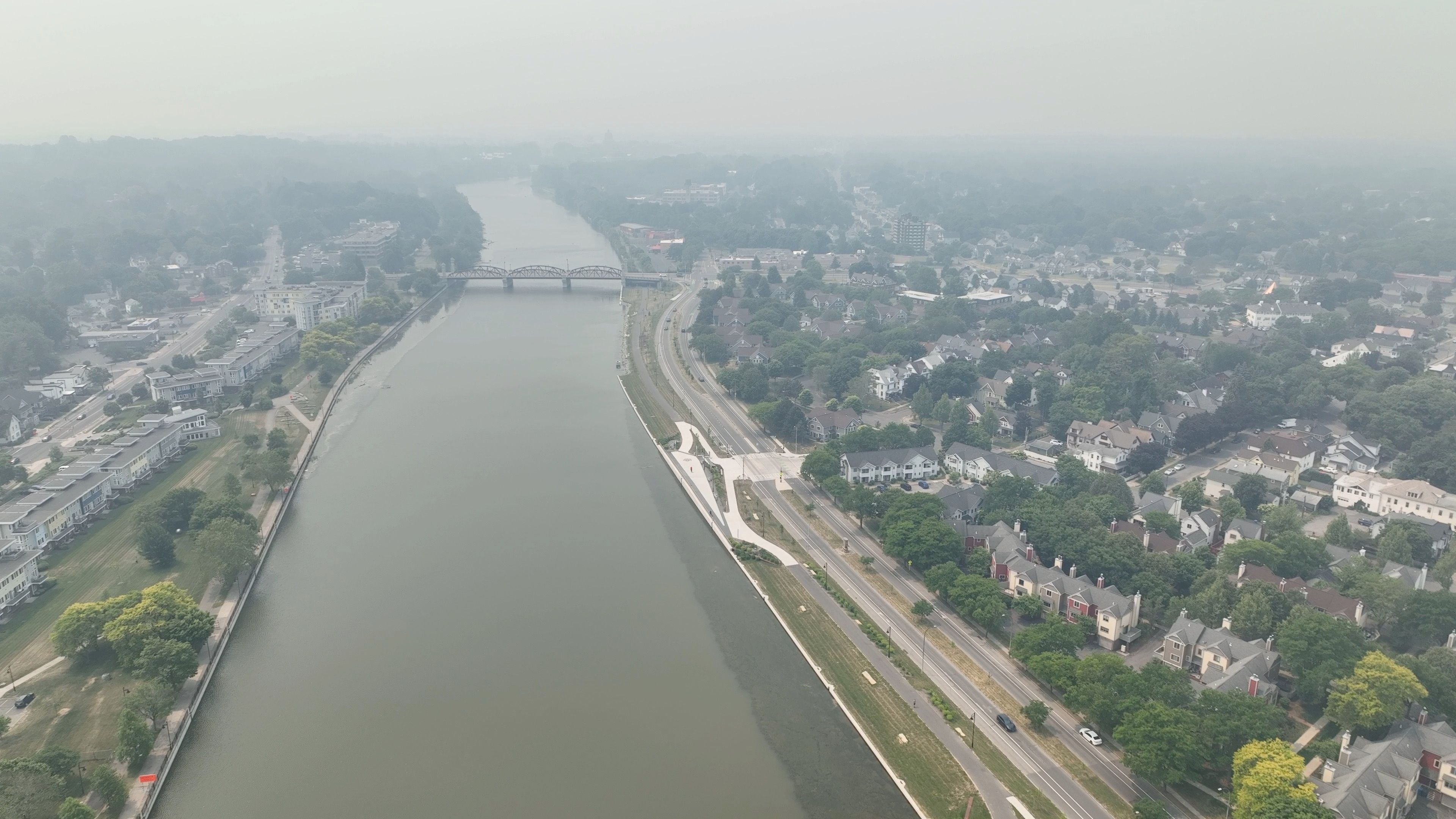- Acne
- Actinic Keratosis
- Aesthetics
- Alopecia
- Atopic Dermatitis
- Buy-and-Bill
- COVID-19
- Case-Based Roundtable
- Chronic Hand Eczema
- Chronic Spontaneous Urticaria
- Drug Watch
- Eczema
- General Dermatology
- Hidradenitis Suppurativa
- Melasma
- NP and PA
- Pediatric Dermatology
- Pigmentary Disorders
- Practice Management
- Precision Medicine and Biologics
- Prurigo Nodularis
- Psoriasis
- Psoriatic Arthritis
- Rare Disease
- Rosacea
- Skin Cancer
- Vitiligo
- Wound Care
Article
Exposure to Wildfire Smoke Causes Increase in Skin Condition Flareups
Author(s):
The ongoing Canadian wildfires are causing poor air quality in the US, which will likely result in more patients seeking help for skin conditions.
The wildfires that have scorched Canada for the last several weeks continue to grow with smoke plumes spreading as far as Europe. In the northern US, areas where residents do not usually have to contend with wildfire smoke are reporting hazy air quality and fumes.1
The latest AirNow Fire & Smoke Map from the Environmental Protection Agency shows that current air quality in the Midwest is particularly poor and that the conditions are spreading farther south. “The wildfire smoke is very concerning for a number of health issues, including eczema. It seems that patients exposed to the smoke have a higher risk of developing atopic dermatitis and itch,” said Peter Lio, MD, clinical assistant professor of dermatology and pediatrics at Northwestern University Feinberg School of Medicine in Chicago, Illinois. “My understanding is that some of the toxic chemicals in the smoke can both directly damage the skin barrier as well as alter the microbiome.”
A decrease in air quality has been shown to cause flares of certain skin conditions. In a study2 Lio has followed, the number of visits for atopic dermatitis (AD) or itch were significantly higher during periods of wildfires than during periods without wildfires. Investigators compared the number of visits for AD or itch during the period before, during, and after the California Camp Fire in November 2018 with the same time frame when there was no wildfire.
Weekly AD clinic visits during the Camp Fire were 1.49 (95% CI, 1.07-2.07) times the rate for weeks without a fire at lag 0 for pediatric patients, and 1.15 (95% CI, 1.02-1.30) times the rate for weeks without a fire at lag 0 for adults.2
Although poor air quality can cause coughing and sore throats, skin will also show signs of damage. According to the California Skin Institute, byproducts such as carbon monoxide and sulphur dioxide can permeate the skin causing conditions such as AD and psoriasis, and increase signs of aging, including wrinkle formation and hyperpigmentation.3
The American Academy of Dermatology (AAD) has said different skin conditions respond to the wildfires on a different timeline. “People who have eczema were more likely to visit dermatologists during the wildfires, while psoriasis patients were more likely to seek care five to nine weeks after the fires started,” said Maria Wei, MD, PhD, FAAD, in a press release.4
She added, “This difference in timing may suggest that there are differences in how air pollution triggers flares for eczema compared to psoriasis. We also noted a significant increase in the number of oral and injectable medications prescribed for eczema during the wildfires, suggesting that the disease flares were more serious.”
Experience indicates that dermatology providers in areas being affected by the Canadian wildfires will likely see an uptick in patients seeking help for flareups of existing skin conditions and those developing new skin conditions due to the poor air quality.
Are you seeing patients with exacerbated skin conditions due to poor air quality? We would love to hear from you about your treatment solutions and pearls to share. Email DTEditor@mmhgroup.com with your insight.
References
- Czachor EM. Canadian wildfire maps show where fires continue to burn across Quebec, Ontario and more provinces. CBS News. June 28, 2023.
- Fadadu RP, Grimes B, Jewell NP, et al. Association of wildfire air pollution and health care use for atopic dermatitis and itch. JAMA Dermatol. 2021;157(6):658-666. doi: 10.1001/jamadermatol.2021.0179
- California Skin Institute. Posted October 27, 2020. Accessed June 29, 2023. https://www.californiaskininstitute.com/how-wildfire-smoke-can-affect-your-skin-and-what-to-do-about-it/#:~:text=Smoky%20Air%20Can%20Increase%20Wrinkles%20and%20Dark%20Spots&text=There%20is%20strong%20evidence%20that,in%20the%20skin's%20premature%20aging.
- How climate change and wildfire smoke can impact the skin. American Academy of Dermatology Association. March 17, 2023. Accessed June 28, 2023. https://www.aad.org/news/climate-change-wildfire-smoke-skin
Newsletter
Like what you’re reading? Subscribe to Dermatology Times for weekly updates on therapies, innovations, and real-world practice tips.












